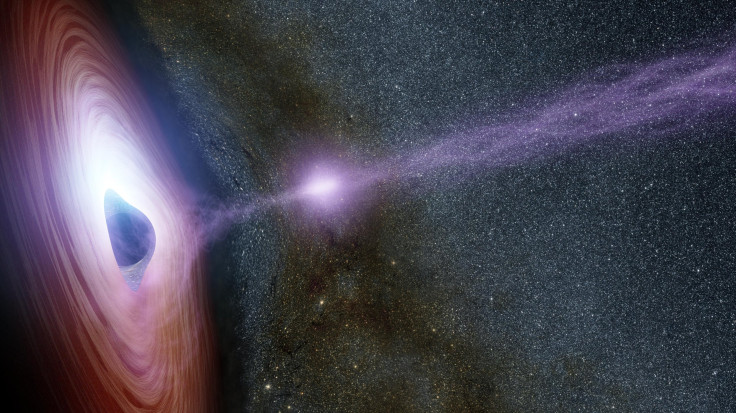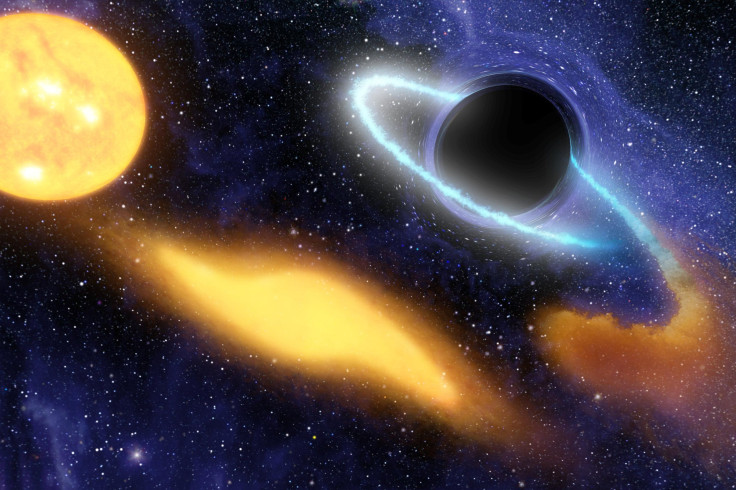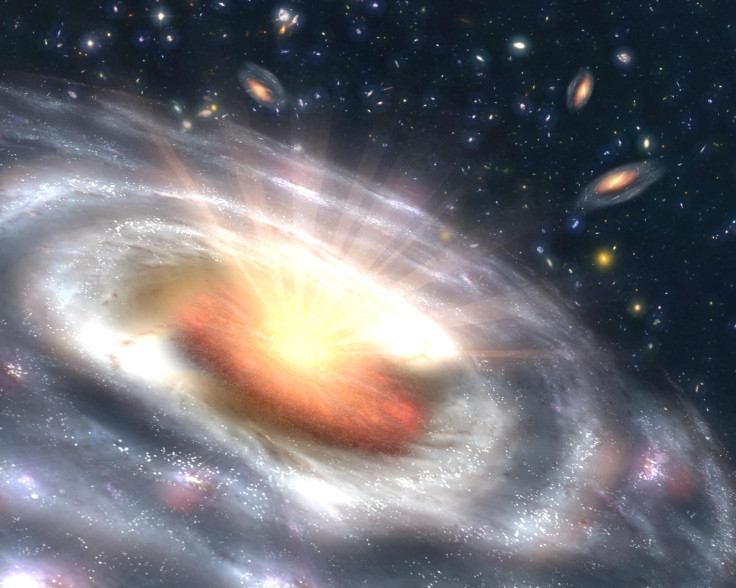4 Black Hole Images From NASA: Portraits Of The Universe’s Best Killer

Black holes are one of the universe’s greatest mysteries. We can’t peer inside these objects, because they have such tremendous amounts of matter packed into such relatively small spaces that their gravitational pull, stemming from how dense they are, would utterly destroy us, shredding us into trillions of atom-sized pieces. Once you get too close, not even light can move quickly enough to escape its grasp — a black hole swallows light whole.
And we need light to be reflected if we want to see something, which means it’s hard to get a look at a black hole. Scientists think they are close, as an international team reported earlier this year that they may have snapped the first-ever image of a black hole’s event horizon, which is the point of no return for approaching objects. But until the team releases its data, we’ll have to make due with the artistic depictions of these space monsters that have helped us understand them thus far. NASA has commissioned quite a few, and these are the best ones.
Bizarre blazar

Supermassive black holes lurk at the center of many galaxies, including the Milky Way we call home. A blazar is in a group of those galaxies with a supermassive black hole that is shooting out a jet of matter in the direction of Earth, lighting up the whole thing for our planet to see, NASA explains. Just as a black hole smothers light, it can also release it.
And just as a black hole can take life, it can also give it: Scientists have observed that in the jets of matter — powerful winds that are also known as galactic outflow — that the supermassive black hole pushes out while it consumes things, baby stars form and grow.
Cool corona
The focus of this image is the ball of light, called a corona, trying not to become the next meal of a black hole that already has a bunch of matter swirling around and descending into it. The corona “contains highly energetic particles that generate X-ray light,” NASA says, and gathers itself up, becoming brighter in the process, “before shooting away from the black hole.” Scientists don’t fully understand why this happens.
Good eats

In this image, a black hole at the heart of a galaxy far, far away gobbles up what is left of a star. This isn’t uncommon, because black holes don’t emerge in a vacuum (pun intended). Many scientists believe black holes form when stars collapse and, as they lie at the center of many galaxies, they are often surrounded by others. Just in case a black hole eats all the stars in its immediate vicinity, galaxies collide in space all the time, introducing new food sources. When the galaxies crash into one another, one of them may emerge victorious, stripping away the stars and matter from the other.
Growth spurt

Eating all that star fuel is important for a growing black hole, like the one depicted here. Those growing suckers are called quasars — not to be confused with pulsars, which are the remains of stars that rotate super quickly. It’s a good thing quasars exist in the distant reaches of our universe because they are enormous and they shoot out so much energy that they can look like stars. When they aren’t threatening the existence of everything around them, they can teach astronomers a lot about how galaxies evolve.
© Copyright IBTimes 2024. All rights reserved.





















